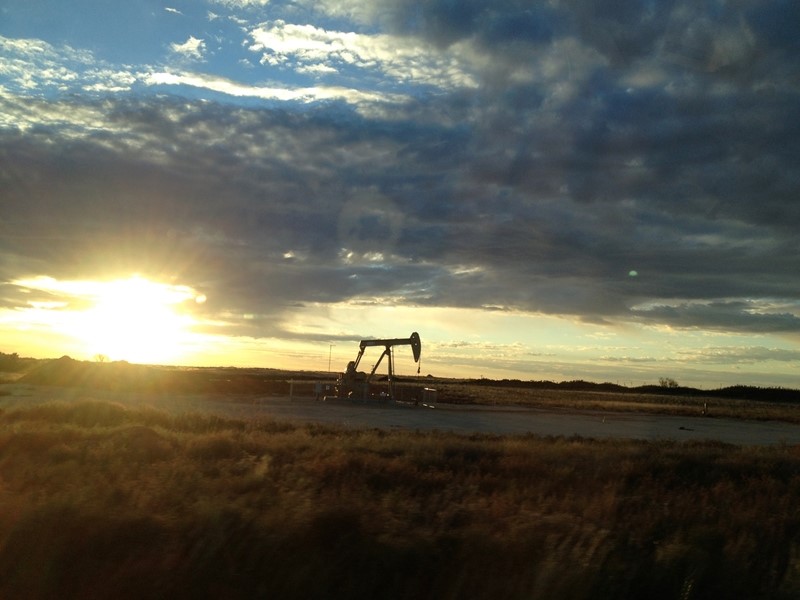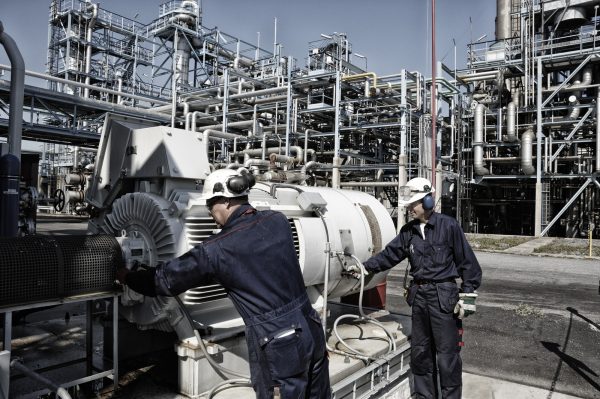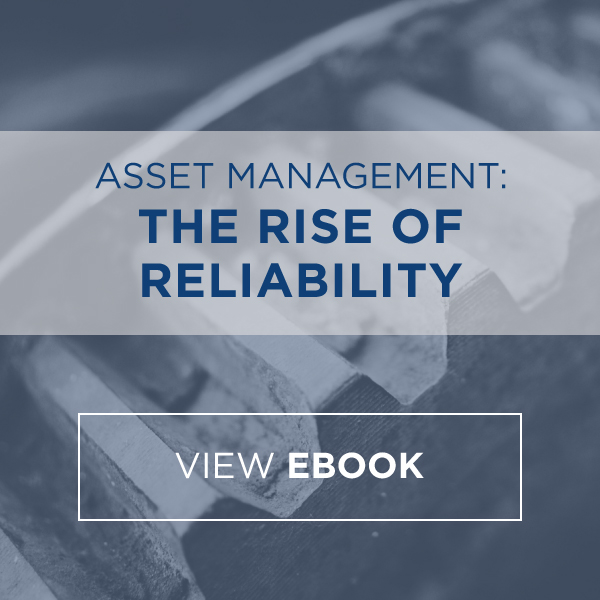-
Subscribe to Blog:
SEARCH THE BLOG
CATEGORIES
- Aerospace
- Asset Maintenance
- Automotive
- Blog
- Building Products
- Case Studies
- Chemical Processing
- Consulting
- Food & Beverage
- Forestry Products
- Hospitals & Healthcare
- Knowledge Transfer
- Lean Manufacturing
- Life Sciences
- Logistics
- Manufacturing
- Material Utilization
- Metals
- Mining
- News
- Office Politics
- Oil & Gas
- Plastics
- Private Equity
- Process Improvement
- Project Management
- Spend Management
- Supply Chain
- Uncategorized
- Utilities
- Whitepapers
BLOG ARCHIVES
- June 2025 (4)
- May 2025 (1)
- April 2025 (1)
- March 2025 (1)
- February 2025 (4)
- January 2025 (4)
- December 2024 (4)
- November 2024 (2)
- October 2024 (6)
- September 2024 (5)
- August 2024 (5)
- July 2024 (6)
- June 2024 (3)
- May 2024 (3)
- April 2024 (4)
- March 2024 (3)
- February 2024 (4)
- January 2024 (5)
- December 2023 (2)
- November 2023 (1)
- October 2023 (6)
- September 2023 (3)
- August 2023 (4)
- July 2023 (2)
- June 2023 (3)
- May 2023 (7)
- April 2023 (3)
- March 2023 (3)
- February 2023 (5)
- January 2023 (6)
- December 2022 (2)
- November 2022 (5)
- October 2022 (5)
- September 2022 (5)
- August 2022 (6)
- July 2022 (3)
- June 2022 (4)
- May 2022 (5)
- April 2022 (3)
- March 2022 (5)
- February 2022 (4)
- January 2022 (7)
- December 2021 (3)
- November 2021 (5)
- October 2021 (3)
- September 2021 (2)
- August 2021 (6)
- July 2021 (2)
- June 2021 (10)
- May 2021 (4)
- April 2021 (5)
- March 2021 (5)
- February 2021 (3)
- January 2021 (4)
- December 2020 (3)
- November 2020 (3)
- October 2020 (3)
- September 2020 (3)
- August 2020 (4)
- July 2020 (3)
- June 2020 (5)
- May 2020 (3)
- April 2020 (3)
- March 2020 (4)
- February 2020 (4)
- January 2020 (4)
- December 2019 (3)
- November 2019 (2)
- October 2019 (4)
- September 2019 (2)
- August 2019 (4)
- July 2019 (3)
- June 2019 (4)
- May 2019 (2)
- April 2019 (4)
- March 2019 (4)
- February 2019 (5)
- January 2019 (5)
- December 2018 (2)
- November 2018 (2)
- October 2018 (5)
- September 2018 (4)
- August 2018 (3)
- July 2018 (2)
- June 2018 (4)
- May 2018 (3)
- April 2018 (3)
- March 2018 (2)
- February 2018 (2)
- January 2018 (1)
- December 2017 (1)
- November 2017 (2)
- October 2017 (2)
- September 2017 (1)
- August 2017 (2)
- July 2017 (2)
- June 2017 (1)
- April 2017 (3)
- March 2017 (3)
- February 2017 (2)
- January 2017 (2)
- December 2016 (2)
- November 2016 (4)
- October 2016 (4)
- September 2016 (3)
- August 2016 (6)
- July 2016 (4)
- June 2016 (4)
- May 2016 (1)
- April 2016 (3)
- March 2016 (4)
- February 2016 (2)
- January 2016 (4)
- December 2015 (3)
- November 2015 (3)
- October 2015 (1)
- September 2015 (1)
- August 2015 (4)
- July 2015 (6)
- June 2015 (4)
- May 2015 (7)
- April 2015 (6)
- March 2015 (6)
- February 2015 (4)
- January 2015 (3)
CONNECT WITH US
Tag Archives: Oil & Gas
The 2024 forecasts for the oil and gas industry include some conflicting speculation about supply and demand. It’s leading to confusion for U.S. companies… not to mention dismay as people everywhere scowl at the gas pump when they’re filling up.
Reuters reported in August that OPEC+ expects to see supply cuts that impact oil inventories, which will drive prices potentially higher than the $88 per barrel of crude in August 2023, the highest price since January. OPEC+ is confident, however, that demand will rise markedly.
But… the International Energy Association (IEA) doesn’t quite agree with those numbers, noting that the fluctuating economy will impact manufacturing businesses, and coupled with the tsunami of electric vehicles, will shake out in the form of falling demand.
Those clear-as-mud speculations boil down to one thing: Uncertainty is ahead for an industry that has already had its fair share.
All industries have been weathering uncertainty for the past few years, starting with the pandemic and, once we thought we had that handled, continuing with a shaky economy, a cried-wolf recession and ever-rising interest rates, putting consumer confidence on shifting sands.
At USC Consulting Group, we specialize in helping companies through uncertain times by optimizing their processes, becoming as efficient as possible and positioning themselves on solid ground to handle whatever is coming down the pike.
Preparing the Oil & Gas industry for an uncertain 2024
Here are seven ways the oil and gas industry can shore up for an uncertain 2024. Though separate goals, all work together to make companies as efficient and productive as they can be.
1. Reducing costs
Is there ever a year when companies in any industry shouldn’t focus on reducing costs? That’s a given, 24/7/365. But, it’s especially important for oil and gas going into 2024, when the economy continues to be volatile and uncertain. Buttoning up costs is a good strategy for the industry to get through that storm. It’s about optimizing production processes in the field and reducing extraction costs in order to offset costs involved in finding new sites.
2. Managing supply chain risks
After the supply chain bottlenecks most every industry experienced during the pandemic, it’s vital to mitigate supply chain risks. It’s a burr under the saddle of the entire industry. Fluctuating costs and supply uncertainty can impact the entire operation. Oil and gas companies need a little breathing room, predictable lead times and a more secure footing going into next year. Securing your supply chain is one way to achieve that. It can help avoid the market roller coaster we’ve seen in the recent past and may help ease pressure from inflation as well. The bonus here is, it can save about 15% on costs.
Developing a solid risk assessment plan that takes into consideration what’s happening at the supplier level will secure your supply chain and prevent any surprise shortages.
3. Focusing on yield
Maximizing yield, like reducing costs and managing supply chain risks, brings solid benefits in any economy, but especially now. It means making sure extraction techniques are as efficient as possible, utilizing methods like Enhanced Oil Recovery to extract more oil from reservoirs that may have been underutilized, managing those reservoirs carefully and by the numbers, and making sure employees across all facilities are on the same page.
4. Closing the how-why gap
In an organization the front line often does not understand the “why,” and the executives don’t understand the “how.” It means, the top brass do not fully understand how the job gets done and the frontline workers don’t fully understand why the job needs to be done. Closing that “how-why gap” is critical for optimal performance all the way up and down the organizational food chain.
5. Standardizing daily and weekly instructions for front-line managers
Going hand in hand with closing that how-why gap is increased training for managers. Many industries like oil and gas rely on frontline training, but some people would say that supervisors need even more. Training trickles down, but efficiency does, too. And the key to that is making sure everyone, across all departments and facilities, is on the same page, doing the job the same way, with a standard set of operating procedures. It’s a vital component for optimal efficiency.
6. Consolidation and acquisition = increased need for communication
New talent, ideas and perspectives can breathe life into a company. Mergers and acquisitions in the oil and gas industry exploded in Q2 2023, according to Enverus Intelligence Research. After $8 billion M&A in Q1 2023 (nothing to sneeze at) we saw $24b in Q2. It’s in line with increased consolidations, as reported by Forbes, with the goal of lowering costs, raising inventory and in the end, boosting investor returns.
All of that M&A activity can put a strain on employees of affected companies. Especially during this flurry of M&A, it’s important to find solutions to help them with the complexities of combining two “legacy” groups, which have their unique set of standards. Finding ways to combine both schools of thought into one set of “best practices” after a merger is paramount to its success. To learn more about it, read our recent case study: “Creating Harmony When Merging Two Companies.”
7. Performing scheduled maintenance
The goal is zero unplanned downtime. Pros in the industry know that’s not so easy to achieve. It starts with asset monitoring, including wells but also pipelines, processing facilities and other equipment to maximize operational efficiency. Scheduling downtime for maintenance ensures a shutdown, but it also ensures you’ll know when it’s coming and can plan accordingly. Unplanned failures or glitches can be costly problems at best but dangerous threats to workers at worst.
At USC Consulting Group, we’ve been working with the oil and gas industry for decades. If you’re interested in optimizing your company’s efficiency in this uncertain economy, give us a call.
From supply chain disruptions to fluctuating demand, the past few years have caused a ripple-like wave of challenges throughout businesses across the globe, including the oil and gas industry.
Fortunately, with oil prices bouncing back, the oil and gas industry has nearly recovered from the issues to pre-COVID operations. That being said, there are a considerable number of concerns on the forefront of the industry that will shape the course of operations for years to come.
So, what’s the state of the oil and gas industry today? Let’s look at some of the issues and opportunities they’re facing.
Production capacity concerns
For months, we’ve been seeing news reports about the Russia and Ukraine conflict. Many of us have been seeking updates on the conflict itself, but those in the oil and gas industry have no doubt kept a keen eye on how it is affecting the global oil and gas market.
The sanctions placed on Russian oil have caused strain on a U.S. refinery system that, like so many manufacturing industries, was already overwhelmed and under-staffed following the COVID pandemic and the Great Resignation that followed. Demand for gas plummeted during a time when the majority of the country stayed in their homes for months on end, which left a large number of refineries with no other choice but to close their doors.
Refinery numbers still have not yet rebounded, which has resulted in a refining shortage of roughly one million barrels of oil a day compared to pre-COVID numbers. Add in sanctioning one of the world’s biggest oil producers, and the increased demand coupled with reduced refining capabilities combines into the perfect storm for shortages and increased prices.
Mergers & acquisitions opportunities
Despite the recently tabled climate bill, this country (and the world at large) is moving toward a renewable energy future. Even if it’s at a snail’s pace.
This has caused leaders in the oil and gas industry to evaluate operations and find ways to meet renewable and decarbonization efforts in the next few decades. One option is partnering with or purchasing renewable energy companies.
Companies like BP, Equinor, Respol, and PKN Orlen are leading the charge in renewable energy investment opportunities, and are reaping the financial and ecological rewards of doing so. Expect many major players in the oil and gas industry to continue to expand their portfolios and increase their outreach with strategic mergers and acquisitions into renewable energy.

Appeasement of investors
Despite incredible year-over-year growth, the oil and gas industry as a whole has been plagued with cash flow issues that have caused investors to reconsider their financial plans.
There are a host of reasons why investors have turned their focus toward other industries in recent years: Some have been leaving due to increased concerns over carbon-mitigation and ecological issues, some have left due to oil and gas’s tendency to overspend cash flows in the name of company growth and continued investment, while others have been scared away due to plain uncertainty.
Whatever the case may be, oil and gas companies are seeking to attract investors again, while investors want to see predictability and consistent returns to shareholders. The aforementioned increase in renewable mergers and acquisitions opportunities is a step in the right direction for the oil and gas industry, and that coupled with an inevitable stabilization will no doubt cause investors to flock back to the industry.
Outdated infrastructure & opportunity for innovation
Across the board, oil and gas infrastructure is aging.
In the off-shore sector, oil platforms are becoming old, deteriorated and increasingly at-risk for operational failures and natural disasters. This, of course, poses a problem not only for oil and gas companies meeting the ever-growing demand of the marketplace, but also risks ecological disaster in the form of oil spills and other malfunctions. Equipment and structural deterioration is no doubt due to saltwater and other environmental factors that come with operating in the ocean, and improvements to such facilities come at great expense, leaving some executives to employ a “we’ll-fix-it-when-it’s-broken” approach.
On land, plants and refineries across the country are aging, too, with many having outdated control loops, absences of updating engineering controls, and lack of complete computerization. This, of course, doesn’t even touch on the efficiency potential that technological aspects like robotic automation, artificial intelligence and IoT advances could bring to these facilities.
We can help
No matter the challenges, issues or opportunities facing the oil and gas industry, one solution is getting the job done more efficiently. That means looking at supply issues in new ways, casting an eye toward structural improvements and ensuring your day-to-day efficiency in the refineries and out in the field. We can help with that. At USC Consulting, we’ve been working with companies in a wide range of industries to up their efficiency game for more than 50 years.
Contact us today if you’d like to talk about how we can help your business.
Internal and external forces are catalyzing change in the global energy sector. From the development and implementation of cutting-edge operational technology to the widespread embrace of innovative consolidation and partnership strategies, transformation abounds. But few of these factors are as influential as the ascendance of shale gas.
Over the last decade, energy firms worldwide have drastically expanded their shale production, causing great upheaval through the displacement of more traditional resources. U.S.-based oil and gas companies are spearheading this charge, producing more than 40 billion cubic feet of dry shale gas per day, according to research from BP. Demand for the commodity continues to increase across the globe as governments search for clean alternatives to coal. Established shale producers in America as well as those in new markets such as Australia and China may soon have to scale up in order to meet the expanding needs of their customers.
Here are three actionable strategies that energy companies here and abroad can use to maximize their operations and find success in the ever-growing shale market:
1. Install innovative production technology
Small and midsize organizations, not energy behemoths, are powering the U.S. shale revolution. How? By developing advanced drilling technology and techniques that now underpin virtually all shale production. Energy companies that wish to take advantage of the healthy shale market and scale up their workflows must pursue similar strategies. Of course, businesses adopting this strategy are unlikely to uncover shale production innovations as transformative as horizontal drilling or hydraulic fracturing. That said, there are powerful new technologies that can facilitate the optimization needed to succeed in the current energy marketplace.
For instance, according to Reuters, many larger firms looking to expand their shale operations are moving forward with digitization efforts that can augment established extraction methodologies. Royal Dutch Shell, the third largest oil and gas company in the world, has begun putting into place connected infrastructure capable of bolstering its inland and offshore shale workflows. Shell engineers now make use of electronic devices capable of separating sand generated during hydraulic fracturing from useable petroleum product. They also leverage DNA sequencing to analyze rock formations prior to drilling. Earlier this year, Shell unveiled a functioning automated drilling platform that allows engineers to dig wells anywhere from the company’s control center in Calgary, Alberta. This asset is expected to generate as much as $2 billion in annual shale production cost savings.
Energy companies new to the shale space would be wise to follow in the footsteps of Shell. They should pursue digitization because cutting-edge technologies can bolster production while cutting costs related to workflow inefficiency and extraction and drilling failure.
2. Focus on supply chains
The supply chains that power shale production differ from those associated with more traditional energy products. Upstream workflow components center on complex infrastructure development and drilling operations that require all manner of support, including specialized waste management and transportation services. The average shale pad contains more than 20 moving operational parts, all of which must function in sequence and on time to meet production goals, according to analysts at EY.
For oil and gas firms new to the niche with plans to scale, configuring supply chains that support this kind of work is no easy task, and simply creating back-end processes of this scale is only half the equation. Organizations must optimize their supply chains to harness the full power of their shale operations and meet demand. But how?
Facilitating effective collaboration among all parties, internal and external, is one solution. When shale producers and suppliers communicate and plan properly, the likelihood of error falls and the inefficiencies that stem from these small missteps fail to materialize. Devoting more resources to materials management is another workable optimization strategy. Shale production involves solid, liquid and gas ingredients, most notably hydraulic fracturing solutions filled with proppants and chemical additives. Oil and gas companies must have supply chain components that can provide key operational materials on the front end and remove byproduct following production. Firms that successfully streamline these activities can support lucrative shale production workflows with high yield.
3. Bolster workforce training
It takes the collaboration of specialists from a variety of industries to get shale extraction sites up and running. From the construction teams that install foundational infrastructure to the drill operators who drive everyday activities, these workflows are full of talented contributors with specialized skills of all kinds. Companies ramping up their shale operations in light of marketplace developments have to cultivate and expand their talent pools to meet the needs of this industry niche.
But the ongoing skills shortage in the sector may make this difficult. As a result, upskilling existing talent is the only workable solution. Oil and gas organizations can divert workers from verticals with declining prospects and retrain them for work in shale production teams. This move allows energy firms to boost their shale output without investing immense amounts in hiring and recruitment.
Together, these strategies can help businesses in the oil and gas industry take advantage of the continued acceleration and intensification of the shale gas revolution.
Here at USC Consulting Group, we’ve been working with businesses across numerous industries for more than 50 years, including those in the oil and gas space, helping them adapt to marketplace transformations of all kinds. Connect with us today to learn more about our work.
Energy companies across the globe have been forced to change their operational approaches in response to an evolving energy marketplace. Crude oversaturation, along with the emergence of cost-effective alternative sources such as natural gas, has pushed per-gallon prices for gasoline and oil down considerably, according to research from the Energy Information Administration. Consequently, firms have found themselves engineering massive restructuring initiatives over the past two years, transforming their business verticals and on-the-ground workflows via mergers and acquisitions, all in an effort to remain prosperous in the low-price era, CNBC reported.
With this work completed, analysts expect more transactions to occur within the global energy space. However, this M&A activity will constitute the heart of portfolio consolidation programs aimed at catalyzing growth and bolstering production. How might this unfold?
Understanding the M&A environment
Many large oil and gas producers with balanced budgets are looking to increase efficiency at scale through tactical moves that allow them to net more acreage in high-yielding territory. At the same time, smaller organizations with considerable experience and drilling inventory seek to scale up through acquisition. This environment gives oil and gas giants such as Exxon Mobil the opportunity to acquire valuable assets located in prime drilling territory that requires little to no investment. RSP Permian, an independent driller based in Dallas, Texas, is an exemplary target for bigger producers hoping to consolidate through targeted M&A activity, according to Forbes contributor and energy journalist Claire Poole. The firm controls more than 500,000 acres of territory in the oil-rich Permian Basin, making the small yet well-established company an ideal acquisition for large organizations focused on solidifying their core operations.
Of course, RSP Permian is not the only viable asset on the market. A handful of other hardy entities are available for purchase. As a result, a significant number of transactions are likely to occur over the next seven months. By year end, the upstream transaction total may eclipse the $64 billion recorded in 2017, according to analysts at the oil and gas research firm 1Derrick.
Grasping the production impact
How will increased M&A activity affect production? Last year’s figures suggest improvement. Even as oil and gas companies swapped assets in 2017, crude production moved upward, especially in the U.S. market where companies exported record amounts of crude oil and petroleum products, the EIA reported. In short, a repeat performance is to be expected during this year of consolidation through M&A.
Oil and gas enterprises navigating this transaction-heavy territory should consider connecting with the industry experts at USC Consulting Group. With 50 years of experience, our consultants can help energy producers on both sides of the M&A equation achieve ideal outcomes. Not only will USC help streamline the M&A process, but they can help improve overall production and process efficiency focusing on areas such as asset performance management, predictive and preventative maintenance, throughput, reliability and sustainability, and inventory control. Contact us today to learn more.
The story of continuous improvement in U.S. energy has two alternate endings. Depending on the topic of conversation, the sector is either a poster child for CI or a cautionary tale for what happens without it.
How can the energy sector learn from its mistakes, double-down in its successes, and chart a course for better CI implementation in the future?
CI in energy: The good, the bad and the ugly
Over the last decade, the United States has surpassed Russia as the No. 1 natural gas-producing nation in the world, according to the Central Intelligence Agency. Additionally, the Energy Information Administration recently reported that, since 2008, crude oil production has nearly doubled to just over 9,100,000 barrels per day. As much as advantageous global economics drive this prosperity, these wins cannot happen without sustained logistical excellence afforded through continuous improvement programs and expert deployment throughout the industry.
On the other hand, the troubles in the production, generation and transmission arms of the energy sector at times outweigh all the good found upstream. These sections have widely struggled to update legacy infrastructure well-past its prime, integrate the latest renewable energy technology into their operations sustainably, and safeguard the grid from cyberattacks. Although deeper dives may reveal success stories in one or two of these problems, the industry is far from where it ought to be and much can be attributed to a failure to adapt intelligently with the times.

Without a deeply rooted culture of continuous improvement, the future of the energy sector could be bleak.
With so much to be done, the energy sector must learn to adapt quickly but sensibly, a lesson offered by the very best continuous improvement practices. Thinking about implementing or improving upon CI at your energy firm? No matter where your company resides on the energy continuum – exploration, extraction, production/generation, transmission, or distribution – it’s time to get serious about your methodology for identifying, engaging in and optimizing improvements across all areas of your business.
How can companies in the energy sector build lasting appreciation for and adherence to continuous improvement to meet its challenges head on?
Question everything, even the best problem-solving
Writing for Finance Magnates, Grant Eggleton, vice president of Global Production Solutions at P2 Energy Solutions, made a compelling point, perhaps unintentionally, about CI in his discussion of big data and surveillance in oil extraction.
At the surface, predictive forecasting through the acquisition of large data sets resolves many issues upstream oil has faced throughout its existence: safety, shortages of skilled labor, and cost-effective asset management that supports uninterrupted uptime. However, unless surveillance data fuels a greater, more specific mission, extractors run the risk of producing a glut of information with little to no insight or actionable intelligence.
How then does a continuous improvement team treat a great idea with a high risk potential? By defining all CI projects with limits and exceptions that gauge their usefulness. Once the established projects fall short of these qualifications, the team must reassess and possibly restructure the system. Remember: A great idea in desperation may not be a good idea in times of success. Always self-evaluate and put the criteria for evaluation in concrete terms.
Strive for cross-departmental buy-in
Previous posts have stressed the importance of creating a diverse CI project management team. As valuable as that is on a project-to-project basis, CI is also a holistic enterprise philosophy. It touches all corners of a business regardless of industry, and even small pockets of reluctance can dismantle the entire undertaking.
If, however, leaders feel as though they are forcing CI initiatives onto unwilling workers, they must stop immediately and re-examine their approaches. Employees are not to blame. This friction is, more often than not, evidence that management has failed to put together a department specific value proposition for CI.
Where this is most common is in industries like energy with complex regulatory frameworks undergoing massive transitions. Sometimes, CI teams may feel as though paving the fastest route to compliance involves steamrolling right through one department, making extra work or mandating unexplained changes.
Fight that urge. Remediation of this problem and advocacy from all will require a stronger balance between the letter of the law and discussions with departmental stakeholders.
Always leave room for motivation
Continuing from our last point, how does a CI team instill the importance of an improvement whose value is not readily understood or directly derived from the actions of a single department?
How, for example, does an energy transmission company meaningfully articulate the gravity of behavior-based safety protocols to its maintenance technicians? By demonstrating, in no uncertain terms, the many consequences suffered by injured workers, co-workers, end users and the greater business. Moreover, CI teams must express how these frontline employees are the strongest defense the company has against these problems. The successes or failures of the employer hinge entirely on those willing to take on this enormous responsibility.
The same method should be applied to every CI project, from incorporating new cybersecurity standards to training for reporting on new efficiency retrofits. Once intangible benefits are placed in tangible terms, any subset of the energy sector can drive CI for anything. Building this motivation into the project, however, takes finesse and planning.
For information and guidance on how to approach specific CI projects in energy, contact the project management experts at USC Consulting today.
No industrial business that hopes to turn a profit in the era of Industry 4.0 can do so without selecting the right key performance indicators (KPIs). These metrics afford operations managers and senior-level decision-makers critical snapshots of how their plants operate and, more importantly, how they ought to operate in order to compete.
When it comes to Oil and Gas, the KPIs that processing facilities choose and utilize depend on their unique objectives. Even businesses within the same industry may seek vastly different insights from their data. But given the state of O&G in America today, which KPIs often make the cut?
1. Capital project efficiency
Between 2006 and 2013, budgets for capital expenditures into exploration and upstream oil production grew at many E&P firms, but have since failed to deliver on the allocation, according to a report from PricewaterhouseCoopers. Capex concerns have been no doubt exacerbated by steep decreases in per-barrel oil prices then and now.
As the Oil and Gas industry as a whole moves into more challenging drilling and extraction environs, it should consider how to visibly articulate capex project efficiency, a multifaceted measurement that combines adherence to stricter budgetary allowance, maintenance spend, and project overrun as well as creep.

2. Attendance and completion of safety training
Safety is notoriously difficult to track. This particular KPI can give on-site safety managers a peek at potential dangers to come. Oil and Gas needs this now more than ever – according to E&E News analysis of data from the Occupational Safety and Health Administration, severe work-related injuries pertaining to “support activities for oil and gas operations” occurred at a rate of nearly 149 per every 100,000 workers. Severe injury includes amputation, in-patient hospitalization, or loss of an eye.
It stands to reason that those who undergo safety training courses will act safely and avoid injury. Safety managers must therefore address any barriers suppressing attendance or completion, and KPIs tracking both will alert them to such issues, especially if they monitor the rate at which completion occurs over time. Advocacy for training will ensure investment into these programs pays off as soon as possible, a crucial factor as many O&G companies face tight margins.
3. Leaks per X customers
Midstream oil and gas firms oversee an incredibly long and intricate distribution network, which requires an understanding of its environmental impact. U.S. Oil and Gas companies manage 2.4 million miles of energy-related pipe and 72,000 miles of crude-oil pipe, according to Pipeline101.org, a website maintained by the Association of Oil Pipe Lines and the American Petroleum Institute.
Aligning maintenance spend with environmental regulations requires a deeper look into how often leaks occur, in relation to customer revenue, and which assets incur the highest repair costs.
Although these KPIs have driven success for others, their real value lies in how facilities implement them through continuous improvement initiatives. To speak to organizational management consultants on how to turn KPI insights into actions, contact USC Consulting Group today.
Truly innovative asset management covers all aspects of monitoring, analyzing, and maintaining capital equipment. Does your business have all its bases covered?
Now recovering from economic instability over the last decade, companies in asset-intensive industries have begun to invest in new and recommissioned equipment. In turn, these decisions ignite a fervent interest in improving uptime quality through optimized workflows, reliability-centered maintenance, and proactive decision-making.
Download our latest e-book “Asset Management: The Rise of Reliability” to discover asset management best practices from our team of experienced operational experts. Here are the seven points examined and discussed therein.
1. Work management
A work order is more than just a slip of paper. Its life cycle extends further than most businesses realize and should include information valuable to future successes in asset management.
2. Downtime tracking
If you fail to understand the nuance of downtime tracking, you will fail to sustainably decrease it.
3. Preventive and predictive maintenance
Reward awaits those facilities that understand what these two cutting-edge maintenance methodologies entail and how to execute on them properly to achieve new heights.
4. Asset criticality review
Are you allocating your resources to the machinery that matters most to your business? Align your goals with your actual asset management processes with a comprehensive ACR.
5. Equipment history capture and analysis
Those who ignore history are doomed to repeat it. Do you know what sorts of data you should capture about your assets today in order to make informed decisions tomorrow?
6. Root cause failure analysis
Assets fail for any number of reasons, but they boil down to three basic types of failure. Learn these as well as tips for digging below the surface when failures strike.
7. Operator equipment care
Line operators can work wonders for an innovative asset management program – if only their leaders know how best to utilize them.
In theory, the continuous improvement model encourages organizations to advance positive changes frequently and smoothly. But what about in practice? How can an industry such as oil and gas, currently struggling with so much disruptive change these days, reach a point where practical CI is even possible?
It all starts with culture, that fertile ground from which continuous improvement compliant principles grow into day-to-day practices and work is carried out to completion time and time again.
The roadmap of Continuous Improvement culture-building
There are several aspects to developing CI culture, some of which require creative, as opposed to formulaic, thinking. Think of CI culture-building like preparing for a long journey. Its steps include, but are not limited to, identifying the following:
- Where you’re going: A definitive vision of how your organization will operate under CI.
- Why you’re going there: Mission statements that emphasize the importance of CI to your specific organization.
- How you’ll get there: The path that will lead you to a state of functional CI.
- Who will help get you there: A list of qualified team members and their roles in this undertaking.
- Who will lead the way: Senior management who will advocate for the cause.
- How will you know when you’ve arrived: Metrics and benchmarks for determining success.
Armed with an overview of what continuous improvement culture-building entails, let’s turn our attention back on Oil & Gas and discuss why rapidly developing an internal environment for supporting these methodologies matters.
1. Oil & Gas has room for improvement
Many influential organizations have called on Oil & Gas to acclimate to a world driven by environmental and cultural sustainability. Earlier this year, the United Nations Development Program, along with the International Finance Corporation and IPIECA, published a report detailing how private-sector Oil & Gas companies can integrate 17 sustainable development goals into standard operations around the world.
Additionally, the latest information from the Bureau of Labor Statistics, women make up only one-fifth of all U.S. oil and gas extraction jobs, even though women occupy about 47 percent of the entire labor force. Creating environmentally sustainable operations and having more female representation in Oil & Gas both represent worthwhile justification for starting the continuous improvement cycle sooner rather than later.

All Oil & Gas workers, regardless of role, deserve CI value boosts.
2. Individual value creation is imperative in low-price environment
At its essence, CI trains organizations to target and remove waste ad infinitum, which increases the value of the work each CI-compliant employee performs. It also incentivizes leaders to invest in training, as doing so will maximize their returns in the form of a highly intelligent workforce.
Automation in Oil & Gas behaves in a similar fashion, reducing work that doesn’t add value or actively depletes value. Both continuous improvement and automation are necessary, and can easily play off of each other, as Oil & Gas companies aim to minimize their operating expenses in the long term and adjust to a financially leaner industry climate. However, in many instances, CI is the figurative fuel that powers the engine of cost-saving innovations like automation. Advanced software and technology-driven processes will not succeed without a culture that clearly defines their significance to the organization utilizing them.
3. Forming the right Continuous Improvement team takes time
Any business undertaking CI methodologies must first build a team of core members who will strive for success. That takes a lot of careful planning, scheduling, and even permanent alterations to roles within a company.
CI team members must possess a deep understanding of their industries, market performance and the challenges of their unique businesses – all signs point to the inclusion of senior-level management, as well as perhaps a few executive stakeholders, along with a cadre of rank-and-file workers with highly developed skills and specialized knowledge.
But instead of piling continuous improvement related duties on top of traditional job specifications, Oil & Gas companies must rewrite all internal roles to account for CI, which will also mean delegating legacy duties once intended for upper management to new parties down the chain of command. Those are not decisions to enter into lightly, so it behooves businesses to start planning now to implement continuous improvement as soon as possible.
Continuous improvement puts the future of Oil & Gas within reach, but companies must first develop a culture conducive to best practices. From there, augmenting operations and incorporating new elements into the greater business schema will become far easier, and Oil & Gas companies can adapt intelligently to whatever tomorrow brings.
For more information on continuous improvement and operations management in oil and gas, contact a USC Consulting Group representative today.
Running a successful midstream oil and gas company can feel a lot like caring for a two-headed dog, one head for upstream operations and the other downstream. Midstream can’t address one head’s needs over the other, balancing the needs of both can prove complex and even redundant, leading to more work with less payoff. However, midstream can make peace by utilizing the right process optimization strategies that focus on increased transparency for both data and resource management.
Technological transparency for ethane recovery/rejection
Midstream oil and gas companies seeking to optimize their processes won’t succeed with a one-size-fits-all fix. Companies must develop multifaceted plans that cover different paths upstream operations might take according to market demand.
The choice between ethane rejection and recovery represents one such decision. Should upstream oil and gas companies divert its ethane into dry natural gas pipelines, or should they simply move it down the chain as is and send it to fractioners for midstream processing? In either case, how can either event receive an optimization boost so midstream businesses turn a good profit without adding complexity to an already complicated system?
“Data visibility allows midstream companies to discern which way upstream operations are leaning.”
Coordination with upstream and downstream partners through data transparency offers a window for midstream companies to interpret more about their partners’ schedules to effectively plan their own. Market and demand fluctuations scrutinized by either party should be shared via an easily accessible data management portal. Instead of waiting for commands from producers as to the course of action to be taken, data visibility allows midstream companies to discern which way upstream operations are leaning, so midstream can plan accordingly.
It isn’t just about market fluctuations either, as Level 2 Energy reported – the recovery-versus-rejection decision could also be contingent on the amount of ethane producers have recently sold as natural gas. Again, as the three segments in the oil and gas chain utilize an open network of freely moving, up-to-the-minute information in a centralized location with a consolidated data stream, midstream can better anticipate what’s coming down the pipe.
Hydrocarbon transfer asset management and maintenance
Hydrocarbon transfer systems present midstream companies with another valuable opportunity to hone processes, not exclusively in their day-to-day operation and use, but also their upkeep over time. Lease automatic custody transfer units move resources from buyers to sellers and give all parties involved visibility into previously transported volumes.
So, why has such important equipment appear to have fallen by the wayside as the rest of the oil and gas industry at large appears so open to other forms of modernization? A study by Rockwell Automation found a predominant number of LACT units rely on “snail mail” to report supply information between seller and buyer, leading to an epidemic of accounting errors. Additionally, maintenance plans for these hydrocarbon transfer assets are usually just as outdated. Manually managing these sites with little to no technological integration and data reporting means midstream businesses charged with their oversight waste valuable resources visiting remote LACT units with no problems while neglecting those that do.
“Operators can coordinate LACT unit visitation data to create criticality rankings.”
Midstream companies ought to invest in remote monitoring capabilities to prioritize maintenance work orders and bolster resource accounting in one fell swoop. Operators can coordinate LACT unit visitation data to create criticality rankings for each site in terms of which receives immediate attention and why. Digital resource reporting capabilities will also prevent miscommunication between buyers and sellers, decreasing or eliminating altogether the resources expended to amend breakdowns in accounting.
Midstream oil and gas operations can serve of two masters, so long as companies pay particular attention to how innovation can streamline data flow and simplify their responsibilities in intelligent ways.
Industries from biopharm to oil and gas are abuzz with praise for continuous processing technology and the advantages the model brings to their businesses. Traditionally, these advancements take less time, consume less energy and usually have a smaller operational footprint to batch production, depending on the industry and assets utilized. From there, many businesses have seen significant Opex cost reductions, productivity gains, and alternative value-add opportunities.
Hype surrounding continuous processing can be particularly difficult to examine objectively, especially for decision-makers lacking the technical expertise while trying to determine if certain batch processes under their purview are worthy or in need of an upgrade to continuous status.
Do your operations fit the criteria below? Then it may be time to switch. Or, perhaps given what you learn, you must develop other areas first before taking the dive into continuous processing to gain and sustain its benefits.
Continuous processes ‘heating up’ in biopharm and chemical processing
If the science matches up, your company could be a prime candidate for continuous processing. Researchers from the Agency for Science, Technology and Research in Singapore published a study demonstrating how exothermic and endothermic liquid-phase reactions occurring in pharmaceutical or chemical processes could prosper greatly from continuous production methods over batch.
A*STAR scientists noted biopharm companies and chemical producers utilizing the Reformatsky reaction, a “organozinc-catalyzed reaction that frequently overheats with batch processing,” could find value in continuous processing. Using continuous methods in this way, companies could save on labor and resource costs, retain high uptime rates, uphold product quality, and perhaps even leverage efficiency as a means of lowering prices for consumers.
Will continuous processing give you IT nightmares?
A recent Automation World survey conducted for its advertisers inadvertently revealed several crucial differences between business leaders operating continuous processes versus batch processes. In sharing the results, the publication has provided on-the-fence decision-makers with powerful insights into what process changes could mean for their business at large.
The survey found more readers working with continuous processing worried about “technology upgrades” and “cybersecurity” than those working with batch processes. While correlation does not imply causation, Automation World Director of Content and Editor-in-Chief David Greenfield who wrote the accompanying article for the survey raised important points on-the-fencers should not take lightly. With an increase in technological innovation, connectivity, and interoperability gained through the incorporation of cutting-edge continuous processing equipment, the companies capitalizing on it are more than likely to possess a naturally increased awareness for the possibility of system breaches. That said, if your organization already struggles with cybersecurity issues under a batch regime, perhaps it may be best to devote attention to those gaps first before pursuing continuous processing and the tech that makes it possible.
Continuous processing removes many inefficiencies batch producers have struggled with since the dawn of modern industry. However, implementing continuous processes without proper foresight could backfire. Be sure to research how continuous processing has made an impact in your specific industry before integration, if you wish to glean a competitive advantage.













